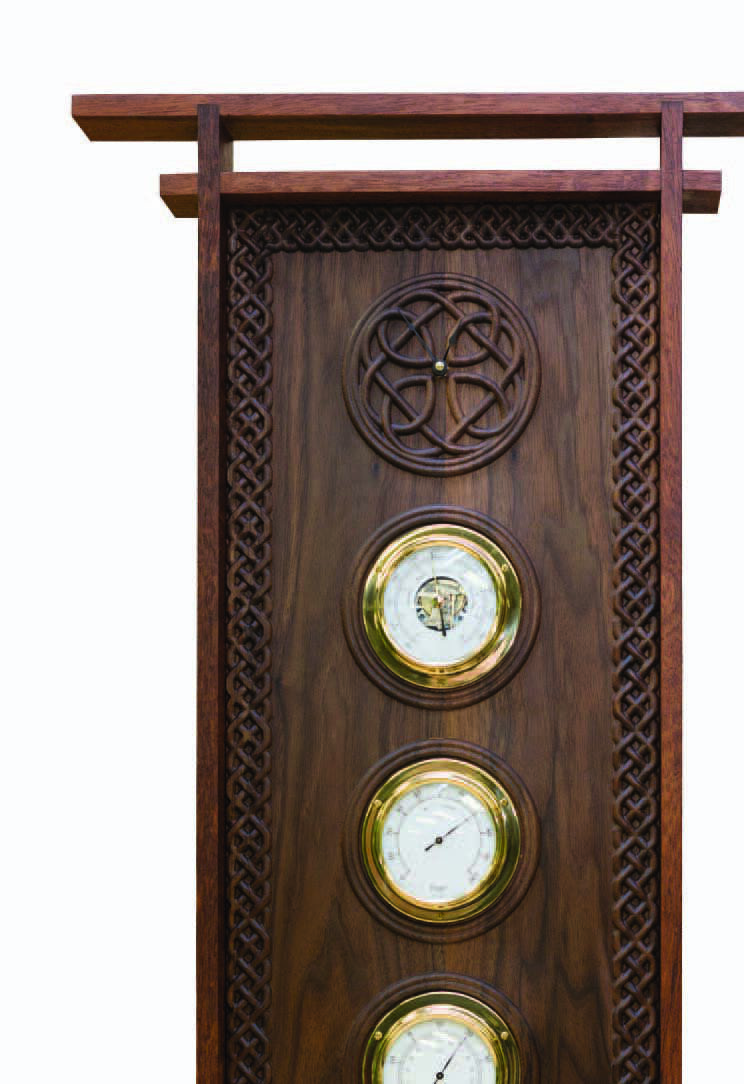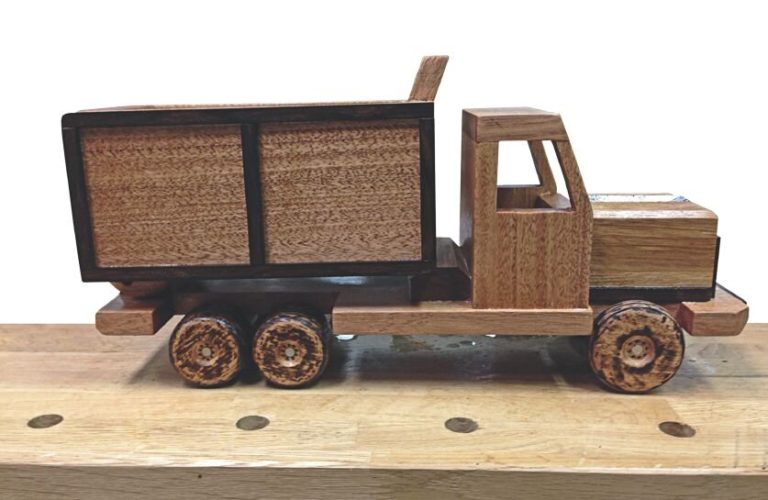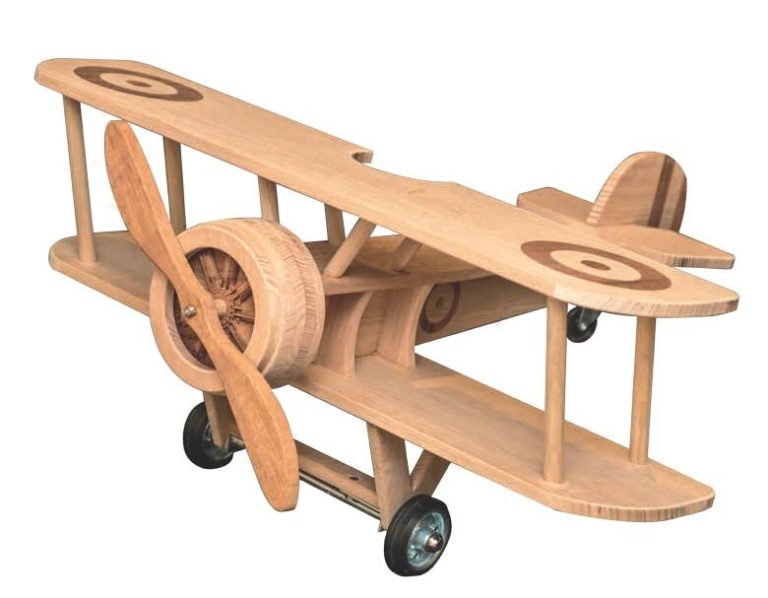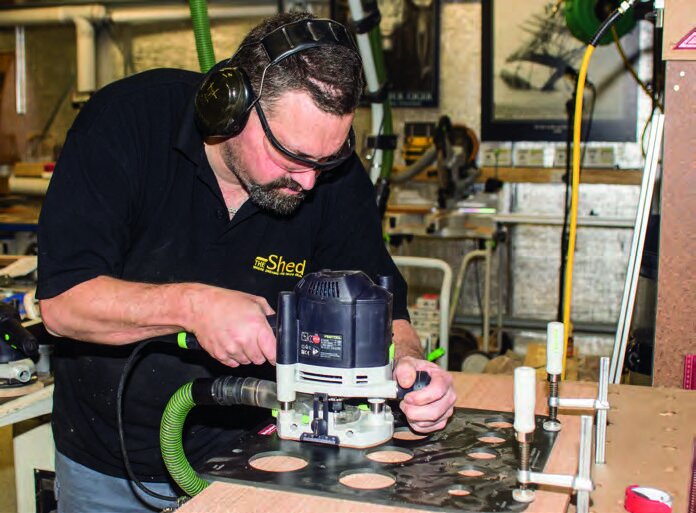MAKE YOUR OWN WEATHER STATION
By Stuart Lees
The weather station: a relatively simple project that requires precision
It may be the row of brass dials that reminds me of my days serving on a New Zealand warship, or the combination of beauty and functionality, or the aesthetic combination of the richness of natural timber contrasted against polished, shiny metal. Whatever it is, I find I am quite partial to a good-looking weather station.
As a project, a weather station is a great one for beginners and advanced woodworkers alike. It can be as simple as taking a really attractive piece of timber, sanding and finishing it to a high degree (even leaving the edges natural) and attaching one or more brass instruments to the surface. Alternatively, you can go to the other extreme and produce a highly ornate surface and surround it with many intricate details to which you can mount the weather instruments. For this project, I have gone for the middle ground with a bit of a twist (pun intended, as you will see).
It is one of these projects where, rather than going for some complicated construction with many components, I am opting for a few simple ones and spending the time on precision rather than complexity.
There are two potential starting points for this project—you can either start with a particular piece of timber that has captured your imagination and build the project around it or start with a design and choose the gauges and timber that complement that design.
I commenced the project in another place again—starting with the gauges and sourcing a quality barometer, hygrometer, and thermometer. The reason for that was simple: I came across a particular gauge that I really liked and decided to build a project around it.
In this case, they are each of a surface-mount design, rather than being recessed into the timber. This is very much a personal preference. Often a clock is also added to the mix and, while I am writing this, I am still debating whether my final design will include one or not—it is obviously not critical for the weather station function.
Some gauges combine multiple functions, such as a thermometer and hygrometer in one.
The piece of American walnut had been waiting in the storage shed for six years for this project to come along. Seen here with the resaw blade used to slice it in two
The bandsaw on the job
Flattening the joined panel using the surfacing cutter on the CNC router
Bookmatching
With the gauges selected, it was time to decide how they would be displayed. I have a bit of a timber store. When I come across a piece that I find interesting, into the store it goes. There it sits until one day (even years later) a project comes along that it would be perfect for. As soon as I started thinking about this project, I knew exactly what piece of timber I wanted to use: a piece of American walnut that I purchased about six years ago which has been in my wood store ever since.
While sketching a bit of a concept for the unit, I had determined that the board needed to be around 300 mm wide and 700 mm long (give or take). The piece of walnut was only 170 mm wide but it was about 45 mm thick, so it opened up the option to resaw the board and join the two halves together to achieve the desired width.
This is where a bandsaw really comes into its own. With a 25 mm-wide tungsten, carbide-tipped bandsaw blade, tensioned to the max, slicing the board accurately in two was a breeze. Normally after resawing the board, you would open it up like a book and join the two edges that are at the “spine”.
This is called—surprise surprise— bookmatching. Now I don’t quite know what happened with mine. I thought I had bookmatched the boards, but either I got it wrong or, as it now seems, when I milled the upper surface of the boards, they deviated in colour and pattern so much that the bookmatching was lost.
The edges that are to be joined are run over the jointer to get the edges smooth and straight.
As I wasn’t confident just how much of the boards’ thickness would be left, I chose not to use any reinforcing in the joint—neither biscuits nor dominos. There is no worse a look than to mill down too deeply into beautiful timber and suddenly discover you have created a plain biscuit feature.
That is fine for this project, as the joint is between two very straight edges and it is not a structural part of the project. While I had spent some time flattening the boards, there was still sufficient warpage for it to be a problem for the next step. While the resulting board was not too wide for the thicknesser, there is no point running it through that machine if there isn’t a flat side to reference off, otherwise, the curve or warp on one side of the board gets mirrored to the other side.
View fullsize
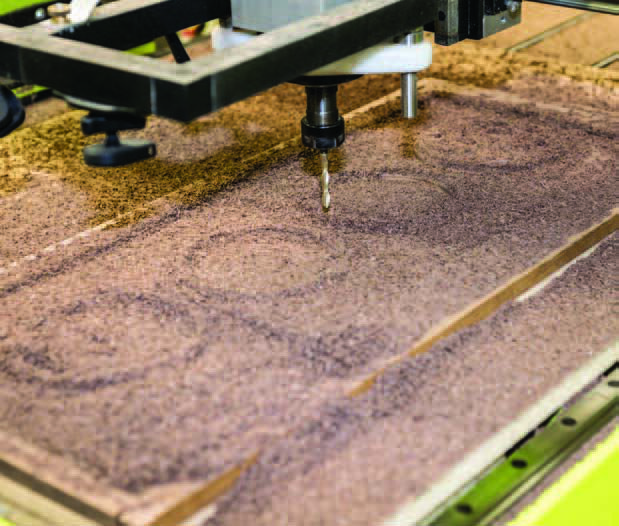
View fullsize
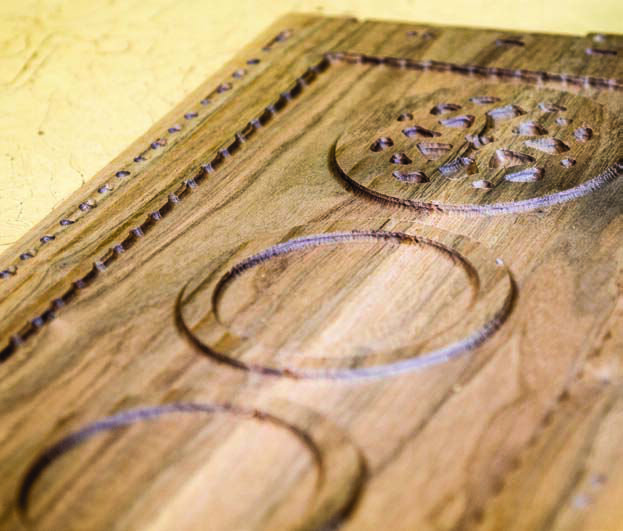
View fullsize
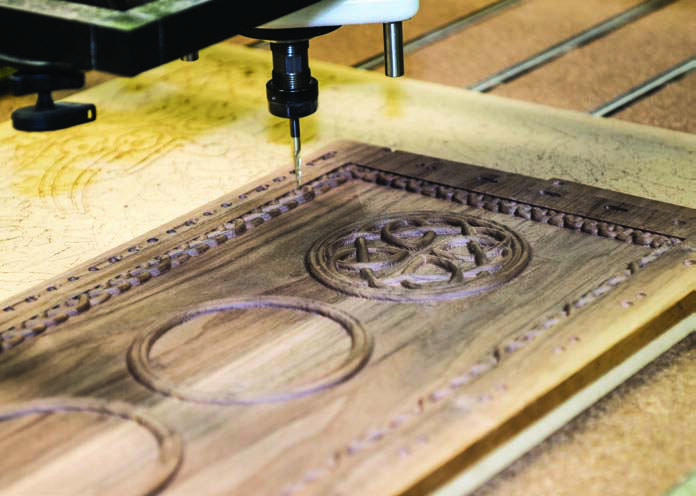
View fullsize
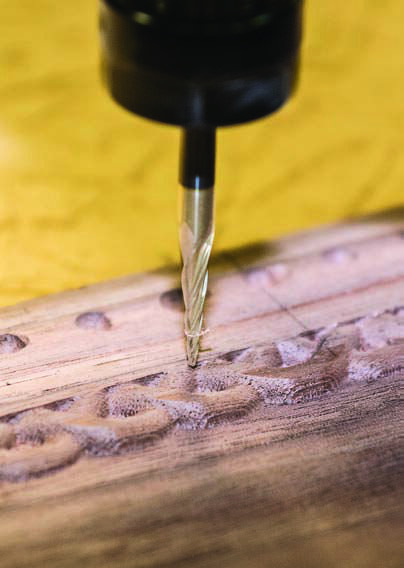
Easy solution
There are ways around this problem, including cutting the boards into narrower strips before joining and flattening them on the jointer. However, I had another option available—an overhead Torque CNC 9060 router. In this case, that router also happens to be computer-controlled (CNC).
With the board secured to the bed of the CNC router so that it could not rock, light passes were taken off the upper surface until one clean cut was achieved over the entire surface. The board was then flipped over and the same task repeated on the other side. While it could have been run through the thicknesser at that point, the overheard router and surface cutter is a lot less likely to cause tear-out. The next step that I took is entirely optional and it depends on the tooling you have available in part.
You may have chosen a really heavily figured piece of timber (even a burl), so it is already a statement piece. Alternatively, you may choose to do some inlay work with a router, or some hand carving, or pyrography if that is your passion.
In my case, I decided to see what would happen if I put the CNC router to work and, while still keeping the design relatively simple, see what may be achievable. I opted for a basic Celtic design for a border, another for the face of the clock and to produce a twin-raised ring around the outside of where the gauges would be mounted.
The first pass used a relatively large 3D routing bit, with a ¼ inch (6.35 mm) ball nose. This was not to achieve any degree of detail. Called a roughing pass, the intention instead is to waste away as much timber as possible as quickly as possible. This was run reasonably fast (at around 100 mm/sec). It could have gone a bit faster, but I am still learning what are the best parameters to use. Even so, this took about four hours.
The next pass was the real test—using an inch (1.56 mm) ball-end, tapered 3D router bit with a zirconium nitride (ZrN) coating to improve the bit’s performance, particularly when machining non-ferrous metals. This step took a little bit longer than the roughing pass—16 hours!
The kerf maker ensures each shoulder of the joint is precisely cut without having to measure once
Setting the kerf maker to the exact kerf of the tablesaw
The kerf maker in action creating accurate slots
Design details
I hadn’t tried to include any CNC routing work in a design before (where it wasn’t the primary purpose of the object) and it really opens up some design doors—at least for those of us who are not experts with carving chisels. The CNC router was also used to cut out hollows behind where each of the gauges would be mounted, as they had a protruding portion and would not have sat flush otherwise.
With the main panel finished, it was time to work out how I was going to frame it up. I had a few ideas running around in my head and one slowly grew on me, involving twin rows of straight boards. It had a very Japanese feel to it, so to take that down a notch I went with a more symmetrical design with a short then a longboard top and bottom.
It is still a Celtic-Japanese fusion, at least in my mind. Next time, I may go with a fully Japanese theme as there is some real design promise there. This design also allowed me to do the joinery using a cross-lap joint and that meant I could justifiably use one of the simplest, yet well-designed and engineered tools I have ever come across—the kerf maker from Bridge City Tool Works. The kerf maker does one job, exceptionally well. It takes the kerf of the blade (and not just the blade width, but the entire width of the kerf that the blade produces) and the thickness of the timber to produce lap joints that are so close in tolerance you need a wooden mallet to gently encourage them together and they can remain like that without glue, the fit is that good.
Gluing and tacking the MDF backing to the panel.
Machining the opening for the clock mechanism…
… and the mechanism in place
Kerf maker
To start, you need to measure the actual kerf the blade is producing (which includes any blade and machine run-out). Rather than trying to work this out with micrometers and the like, it is much easier to simply cut a piece of waste timber, place it on top and set the kerf maker directly to this gap.
The kerf maker then sits in between the piece of timber you are going to cut the joint into and the mitre gauge. It is flipped after one cut, so each shoulder of the joint is precisely cut without having to measure once.
With the frame cut and glued together, despite the tight tolerances, it was time to bring the frame and panel together. I decided the panel had gotten a little thin for it to be dimensionally stable, so chose to attach a piece of 12 mm MDF to the rear. That also provided sufficient thickness for the clock to be back on the agenda.
Using the CNC router again (where in the past I have used either Forstner bits, or a handheld router and a makeshift template), a very precise opening was cut in the rear for the clock mechanism. To ensure it was in exactly the right position, I first drilled a hole from the front all the way through, then used this hole in the rear to accurately position the recess for the mechanism. With the whole piece assembled, it was time to apply a finish. As I do for most projects, a natural wood oil is my preference and, given the intricate design, it was an easy finish to use, being brushed on, then rubbed down with a rag. I gave it a final buffing with a swansdown mop mounted in a drill to give it a satin shine.
Finally, I could attach the gauges. I used brass screws for this, so they matched the colour of the surround on each gauge. Brass screws are quite soft and easy to over-torque and snap, so a small hole was drilled before the screws were inserted. It wasn’t a very complicated project, but it still looks great on the wall and is sure to be a talking point for many years.
Finishing touches: applying the Danish oil
Attaching the gauges
View fullsize
